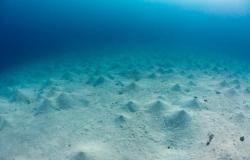To combat the severe drought that is affecting Sicily, someone thinks they can solve the problem through “cloud seeding”: the artificial insemination of clouds to produce rain. Over the last 70 years, this technique has been experimented by about ten countries, including Italy, with a short campaign in the 80s, to try to put an end to a serious drought that brought Puglia to its knees.
Given the missed objectives and the very high costs, most of these countries abandoned the projects. Today there are countries, above all China and the United Arab Emirates, which are carrying out this technique, even if the results of these experiments have never been published in a scientific journal.
How did this technique arise?
In the 1960s the self-taught American chemist Vicent Joseph Schaefer, with the precious help of the scientist Bernard Volnnegutthey conceived the cloud seeding method, the famous cloud seeding.
During a series of experiments in the laboratory they understood that by entering the dry ice, a substance also known as carbonic snow (CO2 in solid state, which is reached below -78.5ºC), it was possible to recreate a cloud.
In a short time, a milky-looking cloud appeared, made up of a myriad of ice crystals. A few weeks later, his assistant Vonnegut discovered that he silver iodide (a salt with a crystalline structure very similar to that of common ice) it was also an effective nucleating element.
The first successes of the technique cloud seeding they arrived with laboratory tests. Then we started to get serious, with the first tests in the atmosphere, through the use of small planes, capable of flying at not particularly high altitudes, among the clouds.
Meteorologists’ first doubts about the effectiveness of the technique
The initial enthusiasm, however, was curbed by American meteorologists who questioned the merits of the method, since clear evidence of direct effectiveness was lacking.
In fact, to understand if the method of cloud seeding was really effective, it was necessary to have the same type of clouds, without dispersing the silver iodide, to understand if even without artificial insemination they were capable of producing rain.
Despite the effort made in trying to demonstrate that cloud seeding carried out in different campaigns had altered atmospheric behavior in different regions of the United States, detailed analysis of weather records has not certified such a fact.
This is because clouds are the result of complex dynamic processes that occur in the atmosphere, constantly changing, second after second, minute after minute. And only in certain favorable surroundings did the cloud seeding technique work.
There are still technical limitations to know in which area of a cloud environment and at what time planting can be completed successfully. In short, without the help of the atmosphere, this technique is unproductive.
The steps forward made today
Today, with new experimental methods, considerable progress has been made in cloud seeding techniques, but the ability to modify them at will and alter meteorological conditions remains very limited. Currently alone China and the United Arab Emirates are continuing to invest in the cloud seeding technique. But the results, especially as regards the cost-benefit analysis, are far from encouraging.
In short, to see the end of this drought we can only wait for the arrival of the rainy autumn and winter disturbances, hoping not to witness yet another stingy season of rain and snowfall in the mountains.





